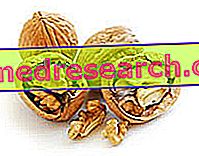What does it mean?
When cholesterol levels remain high, despite proper diet and regular exercise, we speak of familial hypercholesterolemia or primary hypercholesterolemia.

Cholesterol values: What do they depend on?
We know that total cholesterol derives from both nutrition and endogenous synthesis; in particular, about 80-90% is produced by our body - especially by the liver, but also by the adrenal gland and by the sexual glands - while the remainder has dietary origins.
Types of Hereditary Hypercholesterolemia
Doctors prefer to talk about primitive hypercholesterolemia on an eredo-genetic basis, of which three main forms are known:
- polygenic hypercholesterolemia,
- familial hyperlipidemia (and combined hyperlipidemia)
- primary hypercholesterolemia.
Among all, the most widespread (over 2/3 of cases) is polygenic hypercholesterolemia, in which dis-nutritional and environmental factors add up and aggravate the underlying dysmetabolism on a multi-genetic basis.
Polygenic hypercholesterolemia is particularly widespread among Westerners, where it affects up to 20% of the population .
The monogenic form, called essential or primitive familial hypercholosterolemia, which affects a heterozygous individual out of 500 and a homozygous individual over 1 million, is rarer. In this case the disease is determined by an insufficient activity of the LDL receptor, due to an alteration of the gene that codes for this protein; it follows that the blood LDL levels increase proportionally to the reduction in receptor activity, varying from 50 to about 90-95%. The parallel increase in cholesterol is due to the high percentage of cholesterol contained within this lipoprotein class (not by chance called bad cholesterol).
Typical of familial hypercholesterolemia, but rare in other forms of primary cholesterol hypercholesterolemia, are deposits of cholesterol (xanthomas, xantelasmas), which appear as soon as the disease becomes worse. Unfortunately, patients affected by the essential family form have a high and early tendency to develop coronary artery disease and its expressions (angina pectoris and myocardial infarction), which is clearly superior for homozygotes compared to heterozygotes.
Finally, hyperlipidemia familiar to multiple phenotypes is associated with a more complex lipidemic alteration. Epidemiologically, there are in fact isolated increases in cholesterol, triglycerides or both, in similar percentages. The different expression of the lipidemic anomaly can also be observed in the same subject, which in various circumstances may present different dyslipidemia. The incidence in the population is around 2%.
Treatment
As anticipated at the beginning of the article, in the presence of familial hypercholesterolemia (in the broad sense) even a well-set and well-followed diet can fail to achieve an acceptable lipid level. It is however important to intervene in the first instance on the diet, possibly combining it with a regular physical exercise (after medical consultation). Dietary recommendations are generally based on these points:
- reduce the total energy intake in overweight subjects
- reduce total dietary fat to less than 30% of total energy
- reduce the intake of saturated fatty acids (foods of animal origin) to less than 10% of the total energy
- reduce, possibly eliminate, foods rich in hydrogenated oils (present in margarine and in many bakery products)
- reduce the consumption of carbohydrates with a high glycemic index (particularly sweet foods, such as pastry and some types of fruit)
- encourage the consumption of oleic acid (present in olive oil) and linoleic acid (present in fish)
- encourage the use of complex carbohydrates
- increase the consumption of fruit (with the exception of bananas, figs, grapes, persimmons and dried fruit), vegetables and legumes
- moderate salt intake.
The eventual failure of the diet requires the use of hypolipidemizing drugs, which must not however replace, but associate with it, in order to exploit the synergistic action of the two therapeutic interventions. The most widely used medicines in the presence of familial hypercholesterolemia are statins (HMG-CoA reductase inhibitors) and fibrates (most useful in the presence of high triglycerides). Other drugs commonly used are ezetimibe, niacin and bile acid sequestrants.



